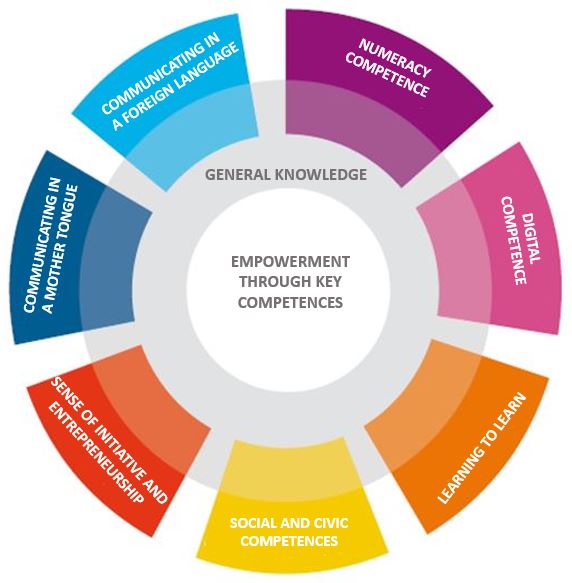Model of programs
In Slovenia, an approach was applied to the selection of key competences that was somewhat different to the one outlined in European political initiatives. The selection arises from twenty years of experience of Slovenian experts in the implementation of vulnerable group education programmes. Eight key compentences were selected and included in the model.
The selection of key competences in the Slovenian model

- core literacy (“communication in the mother tongue” according to the European definition);
- communication in foreign languages;
- numeracy competence;
- digital competence;
- lifelong learning (“learning to learn” according to the European definition);
- social and civic competences;
- sense of initiative and entrepreneurship;
- general knowledge (combining “cultural awareness and expression” and “natural science” and “technology” from the European definition).
When it comes to the development of a concrete learning process, the definition of the key competences model and the selection of basic and cross-functional comptences are overly general. This is why it is essential for the development and especially implementation of educational programmes to start from the findings about educational needs and interests of an individual target group. Educators must decide directly and on their own which basic and cross-functional abilities to develop in adults, how to improve the individual components of educational programmes (cognitive, emotional, action) and how to incorporate experience and improve adult reflection.
Model schematic
The originality of the Slovenian model of literacy programmes lies in the fact that the programmes first address the fundamental practical need of adults and then try to form a new, positive experience as positively as possible thus creating a new/further need for learning or participation in one of the forms of education as shown in the schematic below (Javrh, 2011).

The key change that arises as a result of an individual’s enrolment in education is the change of the educational experience. This leading change comes from within – from the negative, frustrating experience during one’s study to the interesting, liberating and visionary experience in a group of well-functioning learners – and can be one of the fundamental ways out of the vicious circle.
Such a change is also a way for education to ensure long-term effects in vulnerable groups of adults – paradigm shift in one’s view of the importance of learning and lifelong efforts for the development of each and every adult person (Ibid, 2011).
Source
- Javrh, P. (ur.) (2011). Obrazi pismenosti. Spoznanja o razvoju pismenosti odraslih. Ljubljana: ACS. (Title in English: Faces of literacy.)
